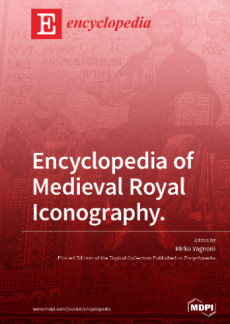This “Encyclopedia Book of Medieval Royal Iconography” sets out to do the first extensive collection of information on royal iconography covering the whole Middles Ages (476–1492). In particular, this book would like to collect entries about every medieval kingdom from Portugal to the Caucasus and from Iceland to North Africa following the different dynasties and with a particular emphasis on the most important kings who ruled during this period (please see an example list here below). Every entry (main body of 3000–5000 words and approximately five figures) should focus on the official iconography of every ruler and answer the following questions:
1) Did the kings make use of royal images? Was it them, some members of their court, or other subjects that commissioned them?
2) Which medium did the kings preferably use for their images (seals, coins, manuscripts, mosaics, frescoes, paintings, and sculptures)?
3) In which context did the kings preferably place their images (in religious places as churches or monasteries or in lay places as palace, squares, or city-gates)?
4) Which visibility did these images have? Who were they addressed to?
5) Which iconographic themes did these images use?
6) In which way did the royal images render symbols of power, attire, and the physical appearance of the king? Did they follow specific patterns or create new iconographies?
In order to explain better the structure of the work, below we list the entries related to the Kingdoms of Sicily and Naples:
- Kingdom of Sicily. Norman dynasty (1130–1194);
- Kingdom of Sicily. Swabian dynasty (1194–1266);
- Kingdom of Sicily. Angevin dynasty (1266–1282);
- Kingdom of Sicily. Aragonese dynasty (1282–1410);
- Kingdom of Naples. Angevin dynasty (1282–1382);
- Kingdom of Naples. Angevin-Durazzo dynasty (1382–1435);
- Kingdom of Naples. Angevin-Valois dynasty (1382–1442);
- Kingdom of Naples. Trastámara dynasty (1442–1494).
Institution: Department of History, Human Sciences and Education, University of Sassari, I-07100 Sassari, Italy
Interests: royal iconography; royal sacrality; meanings and functions of royal portraits; representation of power; royal kingship; political use of royal body; cultural transfers in the Mediterranean; Kingdom of Sicily in Norman–Swabian and Angevin–Aragonese period
Featured Books
- Encyclopedia of Engineering
- Volume 1 (2023) >>
- Chief Editor: Raffaele Barretta
- Encyclopedia of Social Sciences
- Chief Editor: Kum Fai Yuen





